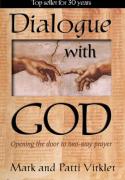“I purposed to know nothing among you except Christ, and Him crucified.” (1 Cor 2:2)
For the early church, teaching on the cross was central. Christ’s crucifixion was understood in the context of the Incarnation. As I shared last week, it is a mistake to equate the Incarnation merely with the birth of Jesus; it embraces His whole life. In fact, Jesus is the Incarnation. He showed us exactly what the Father is like and how to be human as He intended before Adam’s disastrous fall in Gen 3.
Jesus’ incarnational life was the perfect and complete union of God and man; it was God’s great redemptive act whereby He set us free from the domination of sin and death itself. He did this first by the life He lived and secondly by His crucifixion and resurrection.
In the Incarnation, Jesus entered into our fallen existence––our brokenness, sin and failure, but never yielded to them. In the garden of Gethsemane, we have a picture of the lifelong war that Jesus waged against the powers of darkness that assaulted Him from within and without. In the midst of emotional and psychological attack, as He was slandered and ridiculed, shamed and insulted, abandoned and rejected, Jesus won the battles every day. When faced with death, although He could have summoned legions of angelic warriors (Mt 12:53), Jesus chose to engage in the final battle against the Powers, against the sheer weight of our sin and failure, in order to “put an end to the law of death that barred our way and [to make] a new beginning of life for us, by giving us the hope of resurrection.” 1 As Brad Jersak has stated, “Christ does for us what we were unable to do for ourselves. He dies to enter death and so to overcome it…But if He were merely man, He could not defeat death. So Jesus Christ, fully God and fully man, enters death by death to annihilate death itself.” 2
Jesus is the exact expression of God. Therefore, how He went to the cross reveals what God is really like and the way in which He reigns. The Apostle Paul refers to one of the early church’s hymns:
Christ was truly God.
But he did not try to remain equal with God.
Instead he gave up everything and became a slave,
When he became like one of us.
Christ was humble.
He obeyed God and even died on a cross. (Ph 2:6-8)
What has been translated “gave up everything” is, in Greek, kenosis. It is a very important word, meaning “emptied”; it describes Christ’s self-emptying power, His self-giving love. As we looked at last time, in the Incarnation, Jesus is fully God and fully man. He did not set aside who He was in order to come to earth. (For a fuller discussion, see Part 4.) He is the full revelation of who God the Father really is.
Given what we now know about His fully united nature, what if Christ on the cross is not a departure from God’s glory and power, but is in fact the most perfect revelation of His glory? What if kenotic (self-emptying, self-giving) love is the prime expression of who God really is?
The mystery and the power of the cross is that, contrary to the way in which the world works––under the influence of the Powers that rule through violence or fear of violence––God always reigns through kenotic love. This is profoundly counter- cultural; it has always been so. The state rules by power; too often in Christendom’s long history the church has sought some of that same power. (This goes back to the emperor Constantine who promised special favor and protection. It continues in our day under various church/political alliances and guises.) But Christ only reigns through self-giving, humble love. It is interesting to note that the first Beatitude, which I believe is the lynchpin of the entire Sermon on the Mount, states “Blessed are the poor in spirit, for theirs is the Kingdom of heaven.” This is a call to follow Jesus into a kenotic life because, after all, kenotic love is who God is.
We need a revelation of the cross that leads to a new way of seeing the world and the intrinsically counter-cultural Kingdom of God.
- The Kingdom is without control, manipulation or self-interest. These are the weapons and the way of the world and the Powers.
- The Kingdom is not violent. Ever. Jesus did not fight back; instead He absorbed all of the violence that the Powers hurled at Him. Violence cannot ever defeat Satan or the Powers.
- God always wins through self-giving love. Always through love. There is no other way in Him. It is kenotic love that exposes the Powers. This is how Jesus was victorious over sin, death and Satan.
God always wins through self-giving love. Always through love. There is no other way in Him. It is kenotic love that exposes the Powers. This is how Jesus was victorious over sin, death and Satan.
But how can we trust the power of forgiveness and self-emptying, vulnerable love? The answer is in God’s verdict: the resurrection. It is God’s ultimate victory. The resurrection is God overturning the rules, assumptions and lies of the Powers. It is the declaration that Jesus Christ, the creator of the entire cosmos, rules through radical forgiveness and not retribution. The resurrection demonstrates and declares that the universe is built upon the “givenness” of mercy and reckless love. This is the cruciform rhythm of God and His cosmos.
This is the mystery of the Cross.
~ Steve












Add new comment